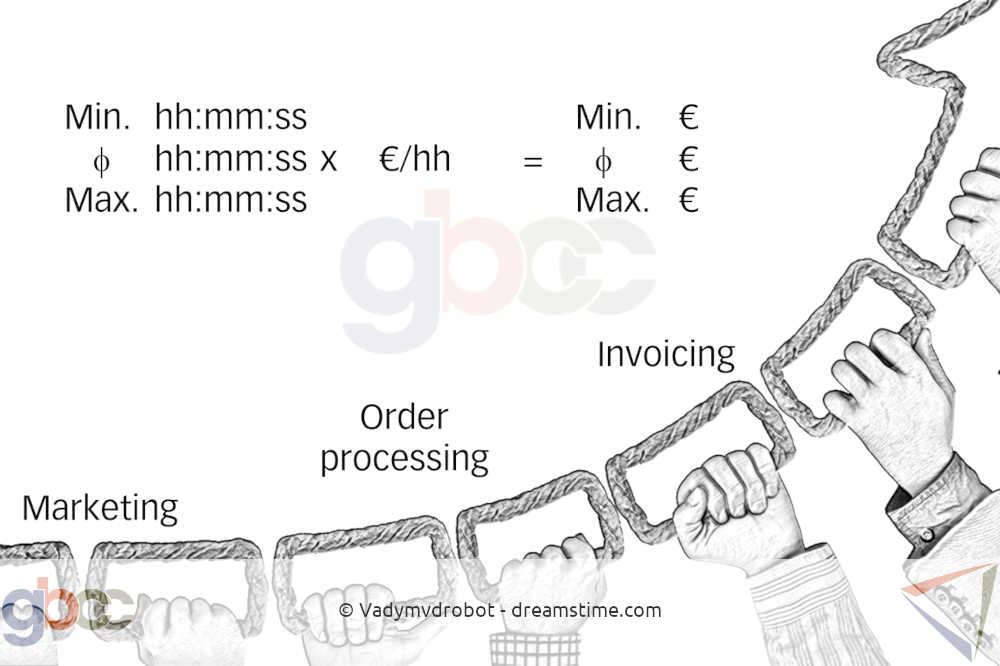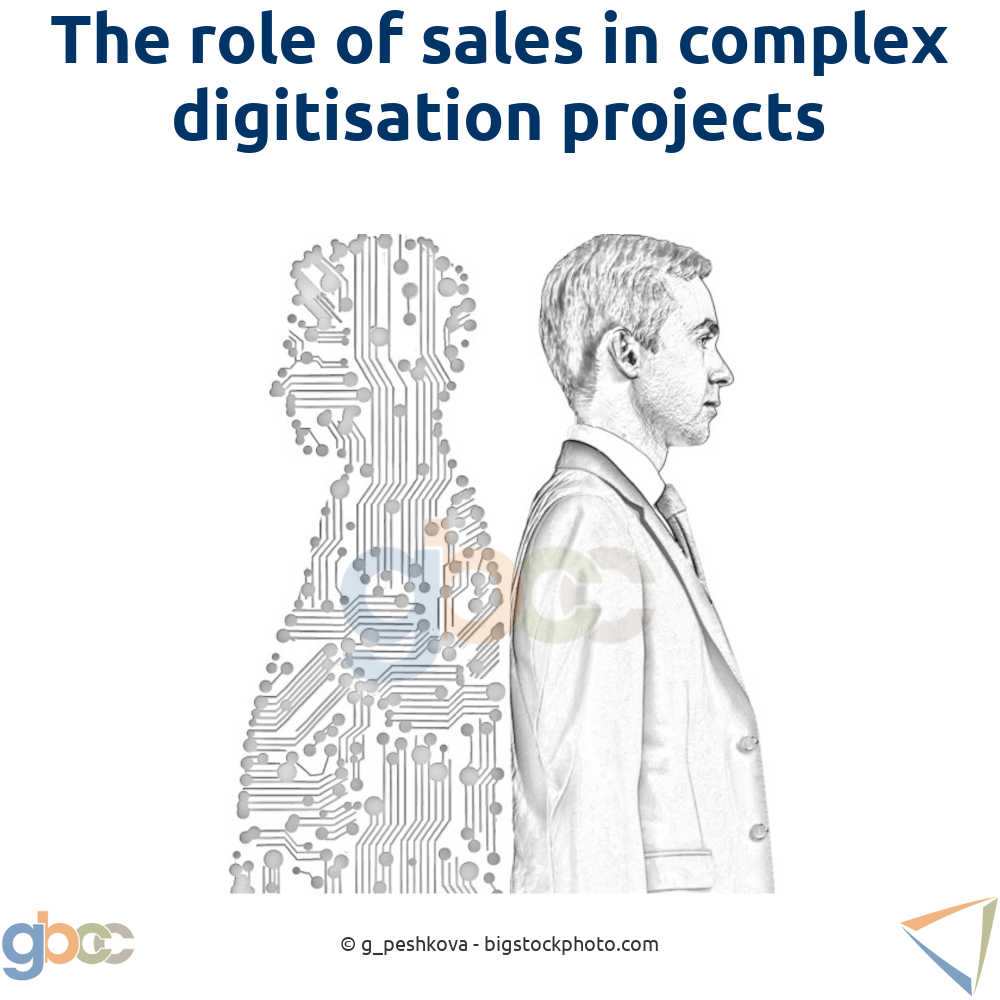Complex digitisation projects can only be successfully implemented if the diverse needs of the project stakeholders can be reconciled. If the customer’s purchasers are also actively involved, there is no way around sales. But are the roles expected of sales clearly defined and up to date?
Recently, a BIM manager complained to me about their sales colleagues. They were slowing down and blocking progress. This is not an uncommon complaint from organisations looking to implement BIM projects.
Could this be because a BIM project is complex and requires the different needs of internal and external project stakeholders to be combined, and sales may not see benefits for itself in the process?
This may be an important aspect, but similar complaints are also heard in relation to IT projects where sales are the main beneficiary, such as the introduction of a new CRM solution.
In this article, I will try to give a possible explanation for this complex problem. In doing so, I will change perspectives several times. This is because the problem to be addressed needs to be narrowed down before concrete recommendations for action can be formulated.
Perspective 1: the needs of a sales representative in complex digitisation projects
What does a sales representative need to do their job properly? For this purpose, I will outline three archetypes:
An “advisor type” comes across as matter of fact and well informed when dealing with customers. They are motivated by the idea of being perceived as an expert because of their technical and product knowledge.
- IT solutions that add value for them can provide them with detailed product information, new competitor products and so on.
However, they do not like “having to sell”. So, putting them in charge of acquisitions is not a good idea.
- The IT solutions they will block will make their sales activities and closing ratios visible.
A “salesperson type” is willing and eager to close deals. They are motivated by the idea of exceeding pre-set targets.
- They will support IT solutions that increase their responsiveness and likelihood of closing deals.
Consequently, it makes little sense to entrust them with full-time customer care. After all, their courteous customer orientation ends when the sale is made, and the next potential deal is not in sight.
- Spending their valuable time writing customer meeting notes and storing them in the system will be seen as a waste of time and will be rejected.
A “relationship manager type” likes to interact with people and is motivated by the idea of binding the client to themselves personally and, indirectly, to the employer.
- They prefer IT solutions that make them look good to their customers. For example, by impressing their customers with a well-founded overview of the business relationship. They will appreciate being informed via an interface that emulates social media where they can see that their business partner has a birthday coming up, has been promoted or has changed employer.
On the other hand, they are frustrated by anything that is abstract and analytical – such as setting sales targets by armchair decision making.
- You will want to skip the hours spent in front of input screens doing customer and market planning.
Each of these three archetypes has strengths that make them particularly suited to certain activities in the sales process. Elsewhere, their type-specific weaknesses lead to frustration and demotivation – both for the employer and for themselves.
Yet, you read it in every job advertisement: the applicant should be able to advise well, sell well and look after customers well!
If the employer cannot identify which talents they need in which position, then they cannot know what the employee needs to do the job properly.

Interim conclusion 1: successful implementation of a digital solution requires the ability to identify and satisfy needs.
Change of perspective: the needs of customers in complex digitisation projects
Officially, all of the above is done in the interest and for the benefit of customers. But is this really the case? What does the customer need to do their job properly?
Let’s ignore BIM for a moment and consider an architect who wants to work traditionally. They need information about properties, availability, dimensions or connections when they are actually designing! They need this information ‘just in time’ and they need to be able to rely on its validity. They need the information to be clearly arranged and presented in an understandable way.

They must be able to immediately see which product features make this product x% more expensive than comparable products? When is the extra cost worth it?
And they must be able to answer the customer’s question: “How much is all this actually costing me?”
For standard products, this is easy, but when it comes to seldom-used components or new products, they urgently need a guide price to prepare their quotation.
They contact the manufacturer’s sales department to ask questions or request missing information, such as solutions to standard details or specification texts.
Guide prices are indeed a requirement that some manufacturers still find extremely difficult to meet. This is because they want/have to refer to a contractor for an answer, who may want to visit the architect first. At this early stage of the project, this is an unnecessary waste of time that the client is happy to avoid.
Interim conclusion 2: the sales process of manufacturers is traditionally geared towards selling tangible products. It is not primarily designed to identify and satisfy needs. This circumstance takes its toll on the efforts to successfully establish a digital infrastructure.
Change of perspective: the role of sales in IT-heavy offers
Indeed, process digitisation appears to be the optimal tool to meet the customer’s information needs ‘just in time’ and at the required level of detail. If the customer has already embraced BIM, their expectations of their sales contact go far beyond the mere provision of useful product information, interface definitions and file formats.
But to even meet these requirements, sales must successfully collaborate with BIM experts and other project stakeholders to ensure that data is delivered to the right place, at the right time, and specified correctly.
But how does this relate to the observation that manufacturers go to great lengths to create detailed, BIM-ready, 3D product visualisations, but the quality of the information provided on geometry, material properties, joints or costs leaves much to be desired?

This brings us full circle back to the lack of communication and coordination between project participants and the failure to clarify expectations of their roles in general and the role of sales in particular. After all, sales used to work with catalogues for the physical product, and now more with “product data templates”.
The expectations placed on the sales force of today’s product manufacturers are not much different from those placed on the sales force of a major provider of digitisation solutions. What professional requirements does such a company set out in its job advertisement for its sales department?
- Perhaps several years’ experience of selling explanation-intensive software solutions? Knowledge of industry standards and BIM best practice? Good understanding of process organisation and costing? Extensive knowledge of ERP and other IT issues? Strong understanding of software development and data analysis or a degree in business informatics?
On the other hand, who is a product manufacturer looking for in their sales department?
- A technician or an engineer? Someone with construction management experience or an affinity for design issues?
The discrepancy and the resulting problem are obvious, aren’t they?
The increasing use of IT in business has changed the nature of many jobs. A change that is not on the radar for many of us because it has been a gradual process. As a result, we are still dealing with the role expectations of yesteryear, trying our best to somehow meet today’s demands.
Interim conclusion 3: to put it provocatively, in the past, the salesperson could close the deal with the installer or technician over a beer. Today, they are dealing with an extremely IT-savvy planner and therefore need dedicated expertise in the functioning of complex IT infrastructures.
Change of perspective: sales as a link in the value chain
The above perspectives are based on implicit premises. For example, that sales are the interface between the supplier and its customer companies. And that its primary task is to ensure a sustained flow of orders, for which it accesses and orchestrates the company’s resources. The metrics used to measure their performance are usually based on the same premises.
Unfortunately, this interpretation often does more harm than good. Strictly speaking, a company does not live on incoming orders, …
… but on the fact that the orders received can be processed with the originally calculated effort.

From this perspective, it is easy to see the difference: one order moves smoothly and quickly through the processes, the other rattles and rumbles.
The reasons for this are largely influenced by the quality of communication between sales and internal departments.
In other words, for orders to be realistically calculated and subsequently processed smoothly, the internal departments need relevant information from the sales department.
From CRM to ERP, internal IT projects are designed to support exactly this process, i.e., the optimisation of internal communication. However, this approach puts the cart before the horse because these expectations do not match the way salespeople see themselves – or the expectations of their reporting line!
“What do my internal colleagues need from me to do their job properly?” This is not a question that sales departments typically ask themselves. They tend to see such activities as goodwill gestures towards their colleagues. Activities that they (happily) carry out as long as they find the time and opportunity to do so. And this brings us back to the lack of clarity about the role expectations of sales in general and their communication behaviour in particular.
To put it bluntly, as things stand today, the only time they have to justify themselves is when an important customer ends the relationship because they feel they have been treated badly. Yet, the sales department won’t justify itself when the process costs are greater than the original estimated costs due to inadequate communication. Only if this happens will the conditions be in place for the successful digitalisation of internal processes.
Conclusion
The desire to build digital infrastructures to be able to sell products “played across borders” in the future requires needs to be identified and met.
To do this, manufacturing companies need dedicated sales expertise through complex digitisation projects. However, the sales process is still geared towards the sale of tangible products. This is also reflected in the staffing criteria for sales.
In addition, those involved in the project need to place much more emphasis on communication and on clarifying rights and responsibilities by mutual agreement. To do this, they must be able to overcome entrenched old ways of thinking.
Medium-sized companies can and should afford to take a step back and start at the grassroots level:
- What does the client want/need to get the job done right, and which of these can/will we provide?
- How would we need to reorganise ourselves internally to attract the attention of the right client, clarify the brief and deliver the promised service in a reliable, sustainable and affordable way?
- How can technology help us in the future to continuously optimise this worthwhile process?
In large companies, such a recommendation would probably not be easy to implement because thinking in terms of departmental silos and reporting lines is already too ingrained. Furthermore, the larger the company, the more the psychological phenomenon of “escalation of commitment” takes hold.
In my view, this is a particularly nasty enemy that we regularly underestimate. The phenomenon is the tendency to feel committed to a decision taken earlier and to support it by providing additional resources, even though that decision has so far proved to be ineffective or wrong. The phrase “throwing good money after bad” sums it up.
There are two important rules to follow:
- Decisions should not be made on the basis of past costs, as these are ‘sunk’ and do not affect the future prospects of a project. It is advisable to make a decision only on the basis of expected future costs and benefits.
- A decision template for a course correction cannot realistically be expected from a person who is actively involved and therefore already has a positive or negative opinion on the matter. A neutral third party is needed. An impartial authority who can clean up the existing, complex IT projects, making it easier to start a well-founded customer survey from the ground up: what exactly do they want or need from us in this increasingly digital world?

